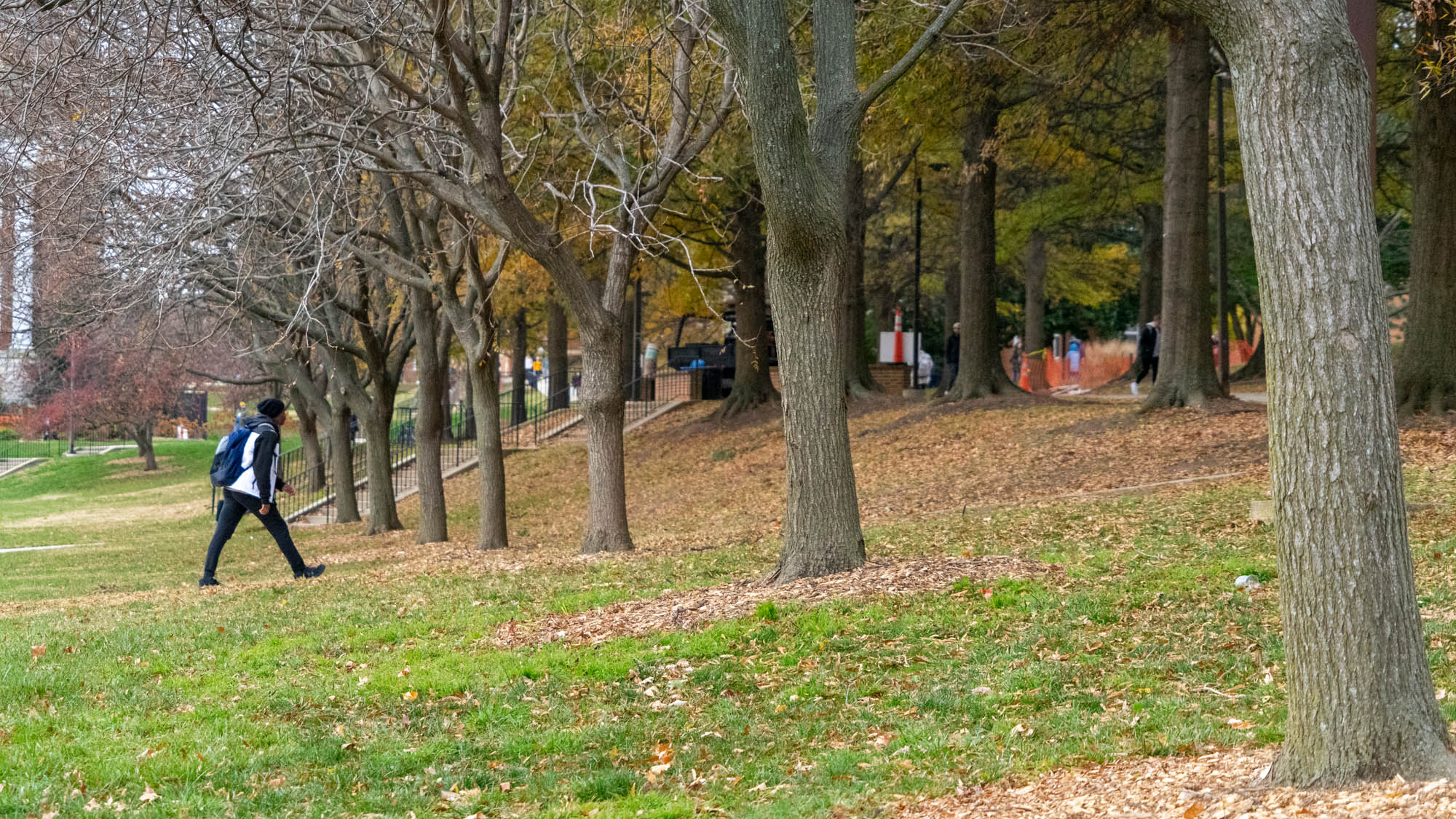University of Maryland researchers published a Nature magazine article in November that explored the role of trees in managing stormwater.
For the past four years, four researchers have analyzed how water movement through trees in urban areas could decrease stormwater.
Research on how trees capture rainfall is not new, but it has taken a while for people to view trees as a way to manage stormwater, said Deb Caraco, a senior water resources engineer at the Center for Watershed Protection. Trees are especially useful in this way, Caraco said. They can help protect people from floods and protect stream channels because stormwater can wear down streams.
The study from the university researchers helped quantify how much trees can actually help reduce stormwater, said Sarah Ponte, a research assistant for the study and doctoral student in environmental science and technology at this university.
In the study, the researchers looked at three types of groupings of urban red maple trees: individual trees next to roads, groups of trees near a trail and closed canopy trees. The single trees and groups of trees were near a Montgomery County retirement community, and the closed canopy trees were in Nottingham, Maryland.
[EPA awards $100K contract to UMD researchers for environmental justice project]
The study could help determine whether to preserve forests or plant new trees when considering new urban developments, Ponte said. This can help places, such as Montgomery County, determine the best practices for managing stormwater.
“This is one step closer to understanding how much those trees are contributing to stormwater management,” Ponte said.
To determine trees’ role in managing stormwater, the researchers examined how water moves to tree leaves before evaporating into the air. The process of water being pulled from the soil and into the leaves depended on a variety of environmental factors, said Dr. Mitchell Pavao-Zuckerman, one of the researchers and an associate professor of environmental science and technology at this university.
When the temperature is warmer, more water is expected to be absorbed, Pavao-Zuckerman added. Humidity can make water harder to absorb.
“We can think of that as you drinking from a straw,” he said. “So trees have tissues that conduct water from their roots to their branches.”
In 2017, the study received $200,000 from the Montgomery County Department of Environmental Protection. The funding was through an initiative from the Chesapeake Bay Trust.
Sadie Drescher, the vice president of programs for restoration at the Chesapeake Bay Trust, said the project was funded to answer the question, “What is the water quality value of a tree?”
Climate change affects everything people do, Drescher said, and having low-cost solutions, such as trees to manage stormwater, is a step in the right direction.
“I think that’s super exciting and groundbreaking for practitioners, regulators and funders to make better decisions about where to place trees and other resources,” she said.
[‘Conservationist at heart’: National Zoo names UMD alumna Brandie Smith its new director]
Drescher said stormwater management is also important because it can improve water quality. Managing stormwater filters pollutants in streams and reduces the total amount of water, she said.
Caraco emphasised the need for this research, adding, “There’s still some things that we need to understand about trees to best incorporate them.”
Ponte said the researchers hope to expand the study and work on a new paper. The next study would use more data from 2018 and 2019 for other tree species, such as sweetgum trees and poplar trees.



